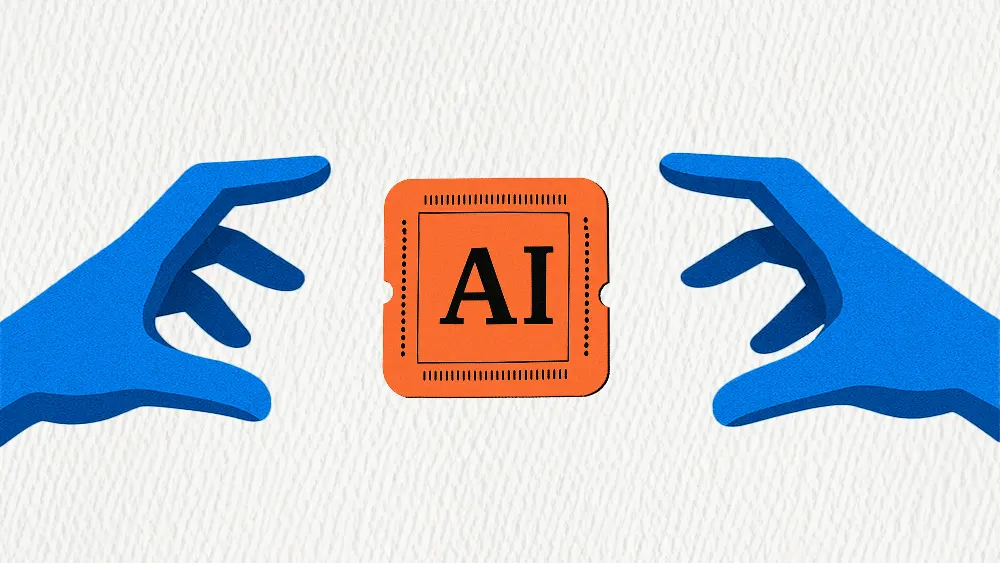*The views and opinions expressed by Eric Hu are his own and do not represent those of any former or current employers.
In the race to AI, leaders might be overlooking the most significant obstacle yet: organizational change. Without clear direction, the pressure to integrate can create top-down mandates that result in frustration. Yet, despite popular belief, the challenge is not just technical. For most, the hardest part about adopting AI is encouraging the cultural shift.
Board observer and investor Eric Hu offers a unique perspective on this problem. His work at private equity firm Thoma Bravo provides a direct view into how mature software companies integrate new technology. As the Co-Founder of Cornell Blockchain and the person who initiated Web3 coverage at Evercore, Hu has seen a technology hype cycle play out before.
"You don't win because you have great tech. You win because you solve a problem better than anyone else. The real question is always, what is the best combination of technologies to solve that problem?" Hu says. To make his point about technology's purpose, he compares AI to blockchain.
AI's impact is immediate because it augments user-facing tasks, Hu explains. Blockchain’s value, however, is in its foundational, backend role. "Think of it this way: blockchains are a data infrastructure, while AI is an abstraction of human intelligence. They serve completely different purposes."
Dollars vs. development: Blockchain’s trajectory was skewed from the start, according to Hu. "Because Bitcoin was its first major application, blockchain became an inherently financial thing. That made it much harder to build real consumer or enterprise applications when it was so easy just to get some money, get liquidity, and leave."
Principles of proof: Instead of viewing them as competitors, Hu sees the two technologies as complementary. "In a world driven by AI, the ability to verify what is true becomes more important than ever. That's where blockchain's core principles, like data ownership and the democratization of governance, become increasingly relevant."
The breakdown in AI adoption often begins with a "vague directive" from the top, Hu explains, a problem made worse by a "generational change" in the workforce. Meanwhile, an execution gap opens between executive ambition and employee action. "The tech is there, but the education is most definitely not," he says. Now, closing that gap requires a strategic framework.
Choose the right tool: The first step is to manage expectations. Unpredictability is a core feature of generative models, not a flaw. "It's a mistake to use generative models for tasks that require a deterministic answer. If you need a predictable response that is the same every single time, you are never going to get that from an LLM," Hu explains.
Mastering context: A one-size-fits-all approach will fail, Hu cautions. "You have to customize for both tone and context. Someone from sales and someone from your R&D department have very different needs. For the models to work best, they also need the right context, and you probably don't want your sales team knowing everything about the code."
A successful AI implementation is a sustained cultural initiative, Hu continues. Leaders must build an environment that encourages innovative experimentation, measures progress, and empowers employees. "When it comes to agentic systems, you have to ask: how are you going to 80/20 it? What are the 10 or 20 percent of repetitive tasks that consume so much of your team's time? That is the low-hanging fruit. Focus on that first," he says of the 80/20 Pareto principle.
Measure what matters: But an initiative without metrics is only a suggestion, Hu advises. Tying an AI mandate to clear performance metrics is essential for accountability. "If an initiative isn't measured, it probably won't be implemented."
Fund experimentation: Continuous discovery and a budget for failure are prerequisites for proficiency, Hu says. "A cultural shift won't happen overnight. People need time to really try different things, and that requires giving them the space and budget to explore."
A top-down mandate is best implemented from the bottom up, Hu concludes. The most effective way to scale adoption is to identify early adopters and officially empower them. "Identify the high achievers when it comes to AI, and empower them to spread that knowledge and teach others." In this sense, the most critical challenge is only human, after all. "The most important question is, how do you implement something in an organization? Ultimately, it's a people thing."









